Reporting on Results
Throughout 2021–2022, the House Administration continued to progress on its strategic priorities, adapting and innovating as needed, all while ensuring smooth operations and the continuity of parliamentary business. In light of the ongoing COVID-19 pandemic and its impact on the realization of the House’s vision and mission, the House Administration reviewed and extended its Strategic Plan 2019–2022 to the end of March 2023.
Highlights of 2021–2022 results
The Board of Internal Economy, the governing body of the House of Commons, ensures that progress against the Strategic Plan is communicated through the annual Report to Canadians. This section presents some of the work undertaken by the House Administration between April 1, 2021 and March 31, 2022, in support of Members’ activities and in alignment with our four strategic priorities.
Improved client experience and operational excellence
Orientation tailored to the needs of newly elected Members
Following every general election, the House Administration guides new Members through an orientation program outlining the administrative and procedural information that Members need to know as parliamentarians and as employers. This year’s program was adapted in response to the pandemic to give Members the choice—for the very first time—to participate either in person or virtually, in keeping with public health measures.
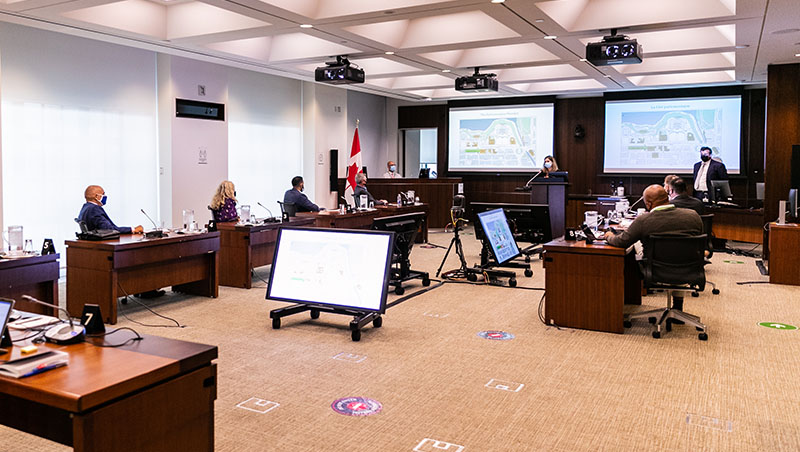
Experienced employees of the Administration took on one of the following three roles:
- Liaison officers help newly elected Members obtain on-site support with onboarding;
- Transition officers assist departing Members with all activities surrounding the closing of their offices; and
- Advisors assist re-elected Members by coordinating the work involved in transitioning from one parliament to the next.
An orientation centre welcomed Members’ during their first days on Parliament Hill, and an integrated learning portal gave Members and their employees access to online and in-person training. Key orientation topics included an overview of Parliamentary Precinct buildings and services as well as information on human resources and staffing, budgets, technology, health and safety, security, and procedural and legal matters.
Although the Program has now ended, Members and their employees continue to have access to educational material through online training and information sessions. The Administration provides a variety of resources on its learning portal to support them throughout their mandate.
Support for departing Members
To assist Members who did not seek re-election and those who were not re-elected, as well as their employees, a transition team oversaw the delivery of a range of services, including help to vacate parliamentary and constituency offices. A service centre was set up on Parliament Hill for departing Members and their employees.
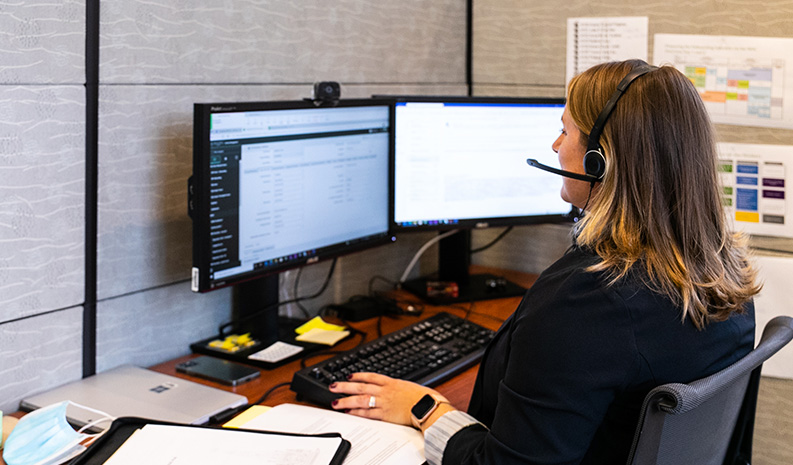
Improved access to parliamentary information
To make parliamentary information more readily available to Members and the public, the Administration partnered with the Senate and the Library of Parliament this past year to renew the LEGISinfo website. All bills before the Senate and the House of Commons are tracked on this Web-based tool. New features were added and the search functionality was improved to allow full-text searches of bills, improve navigation, and make the user experience more accessible and mobile friendly.
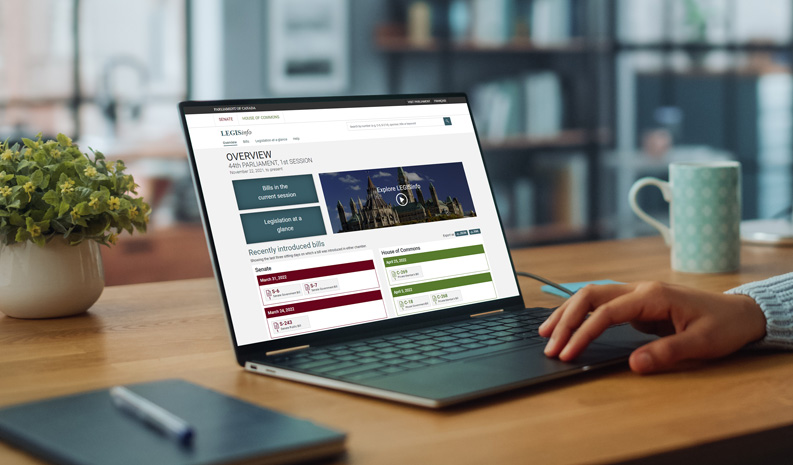
Unified and seamless services
A simplified service experience for Members
In May 2018, Administration employees from various sectors banded together to provide in-person services to Members. Now four years on since its inception, this team—called Sourceplus—has become an important resource for Members in their daily business. There are four Sourceplus service centres located throughout the Parliamentary Precinct, where Members and their employees can request services and in-person assistance on a variety of topics, such as IT support, equipment and expense claim submission.
During an election period, the Sourceplus team joins forces with the Members’ Orientation Program to provide personalized support to Members.
Beginning in 2022, Administration teams that offer phone and email support in the areas of building management, precinct access, financial services, and IT enquiries will come together to form one team, coordinating with Sourceplus advisors. This new centralized team will focus on identifying ways to extend the streamlined, multidisciplinary service model to provide a simplified and seamless experience to Members and their employees.
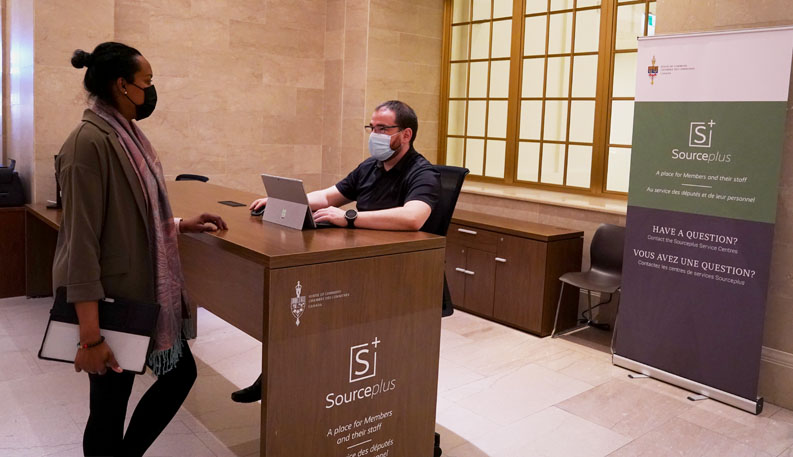
The importance of protecting information
One of the ways that the Administration supports Members is by protecting information on parliamentary activities. To this end, the House has developed its own program, which includes enhanced cybersecurity measures and security tools. The Administration has a robust cybersecurity structure in place and, this year, it deployed a renewed and enhanced constituency connectivity service across the country. This service improves cybersecurity for the House of Commons as well as for constituency offices equipped with House-managed computers. This way, Members benefit from the same cybersecurity protection and IT services in their constituency offices as on the Hill.
Empowered and engaged workforce
Inclusion: the House Administration’s newest value
The Anti-Racism Subcommittee published its first report in June 2021. The Subcommittee’s mandate is to propose meaningful action to help guide the Administration’s efforts toward building and maintaining an anti-racist culture in the workplace. Shortly after the report’s publication, the Strategic Plan was updated to add a new core value: “Inclusion: We value diversity and inclusion, and empower everyone to bring their whole selves to work.” The Administration also unveiled a statement signed by every member of the Clerk’s Management Group, affirming their commitment to fostering diversity and inclusion and to implementing a House-wide, collective approach to anti-racism at all levels.
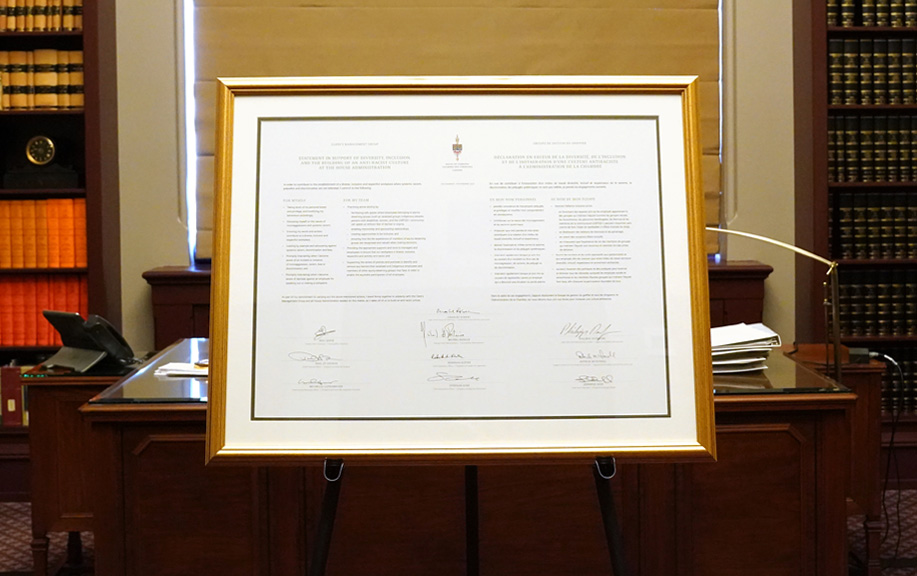
Ensuring health and safety awareness and compliance
In compliance with Part II of the Canada Labour Code and its Regulations, the Administration continued to ensure health and safety awareness at all levels of the organization through a renewal of its policies and procedures. It also provided training, including on the prevention of harassment and violence in the workplace to Members and their employees, and to Administration employees.
A new online application was launched this year which makes it easier for Administration employees to report and manage work-related incidents, hazardous situations, work refusals, and workplace inspections. The House also conducted a series of corporate health and safety risk assessments to ensure that control measures are in place to raise awareness and protect employees from work-related injuries or occupational illnesses.
Collecting employee feedback
The House of Commons conducted an Employee Engagement Survey in 2018 to gauge the employee experience and better understand what motivates employees to succeed. The participation rate in the survey was high and the compilation of the results allowed the House to identify specific areas of concern on which to act in response to the findings. This year, progress was made on various aspects of this corporate action plan, including:
- documenting and communicating corporate planning and decision-making processes;
- researching change management and meeting best practices;
- prioritizing and evaluating employee communications throughout the COVID-19 pandemic;
- launching a streamlined competency framework; and
- enhancing learning for managers and employees.
These activities foster a culture of engagement in which all employees are empowered to provide the best and most innovative support and services to Members of Parliament.
The COVID-19 pandemic also meant that the organization needed to gather feedback from employees to understand and address the situation’s impacts on their daily activities. Pulse surveys were conducted to help guide decisions and ensure that employees are getting the support they need. In collaboration with its parliamentary partners and public health authorities, the House Administration provided regular COVID-19 updates to keep employees informed while protecting their health and safety.

Modernized physical spaces and associated services
Latest progress on the rehabilitation of the Parliamentary Building
Due to the major restoration that began in 2019, the Parliament Building has been a busy site all year, with extensive work taking place both inside and outside the building. Excavation for the new Parliamentary Welcome Centre is underway, as is work to restore the masonry on the north facade. Interpretive panels about the rehabilitation of the Parliament Building have been set up around the worksite to inform visitors about the project. The working group composed of Members of Parliament from all recognized parties reconvened after the general election to ensure that the input of parliamentarians is reflected in the development and design of the building.
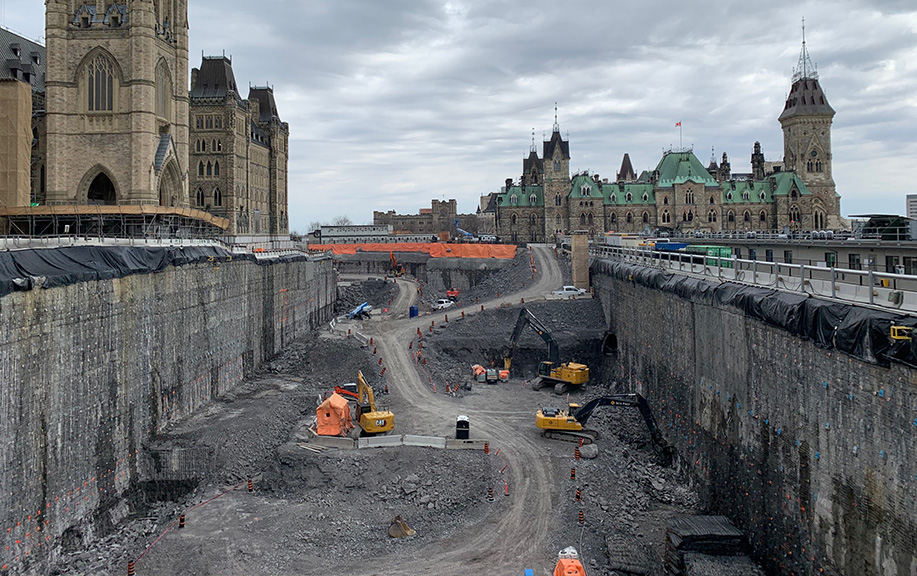
Temporary silencing of the carillon
As part of the work underway to restore the Peace Tower, the carillon is now silent to allow for the restoration of its belfries, bells, and support spaces. Dr. Andrea McCrady, the Dominion Carillonneur of Canada since 2008, played a closing recital on February 23, 2022.
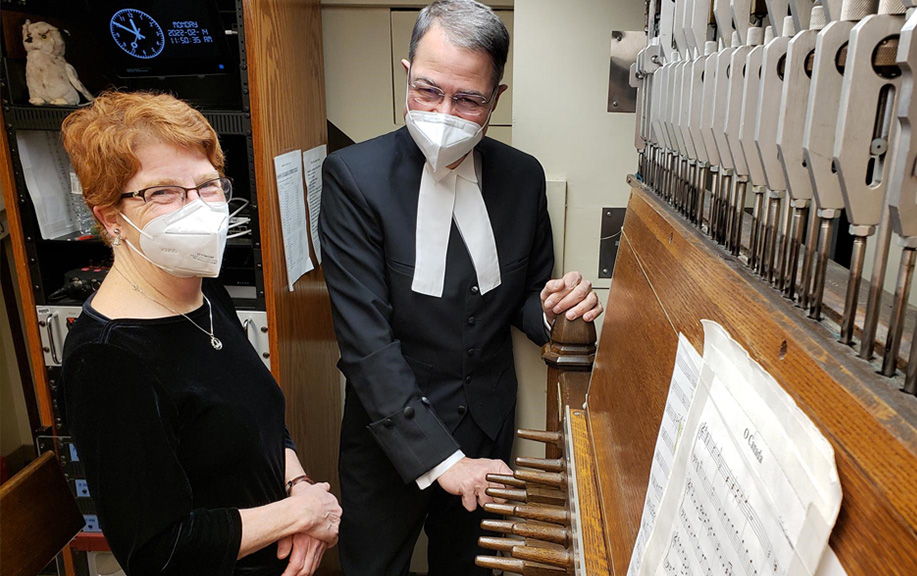
A growing Heritage Collection
There are over 5,000 works of art, official portraits, historical paintings, ceremonial objects and pieces of furniture in the House of Commons Heritage Collection. As an example, the Clerk’s Table—which stands in the centre of the House of Commons Chamber—is an important part of this collection.
The first Clerk’s Table, built in 1866, was destroyed in the fire that consumed the Parliament Building in 1916. A new Clerk’s Table was built and installed in the Chamber in 1921. On the centenary of the installation of this replacement table, the House Administration created a replica to stand in the place of the one-hundred-year-old table in the Chamber while the latter undergoes a complete restoration.
The Speaker’s Chair in the House of Commons Chamber is an excellent example of how an object may serve both a symbolic and functional purpose. This year, the family of the Hon. Albert Sévigny, Speaker of the House of Commons from 1916 to 1917, donated the chair that was used while the House sat in the Victoria Memorial Building after the fire in 1916 to the Heritage Collection.

Did you know?
Prior to 1921, a new chair was built for every Speaker, which they took with them at the end of their mandate. The last chair commissioned for an individual Speaker was the one used by the Hon. Edgar N. Rhodes. The “Rhodes chair,” as it is commonly called, found its way back to the House of Commons in 2005 and is now being used in the West Block interim Chamber.